
Fed Meeting Minutes and Asian Banks’ Meetings!
With hotter-than-expected inflation data in the U.S. and concerns about higher rates persisting for longer, the USD strengthened, and stock markets faced some pressure. However, following the Trump-Putin talk, market risk eased, leading to a reversal. Meanwhile, U.S. retail sales unexpectedly declined in January, suggesting that consumers tightened their spending at the start of the year.
Outside the U.S., China’s inflation showed some progress, and U.K. economic data surprised the markets. However, the fourth-quarter GDP growth figures remained somewhat underwhelming. In Brazil, inflation eased but remains elevated, and we expect the Brazilian Central Bank to continue its tightening policies this year.
Looking ahead, key events include U.S. housing data, and the Fed meeting minutes, along with Japan’s GDP (Monday), the Reserve Bank of Australia’s policy rate decision, U.K. labor market data (Tuesday), New Zealand’s policy rate decision (Wednesday), PBoC’s interest rate decision (Thursday), and Eurozone PMIs on Friday.
USA, Review, and Outlook
With Fed Chairman Powell’s testimony before the US Senate, now we can say that the Federal Reserve maintains a hawkish stance. Chairman Powell emphasized the tight labor market and persistent inflation, despite its gradual slowdown. Powell reiterated that the Fed is in no rush to cut interest rates, reinforcing tight financial conditions. He also acknowledged the potential inflationary impact of Trump’s proposed tariffs. The upcoming release of the Fed’s January meeting minutes could further support the USD if a hawkish tone is maintained.
Economic data continues to show mixed signals. Industrial production rose, driven by increased utilities output amid harsh winter weather, but mining and manufacturing lagged. Retail sales unexpectedly declined by 0.9% in January, signaling weaker consumer spending momentum. Meanwhile, inflation remains elevated, with January’s CPI coming in hotter than expected—headline and core inflation rose by 0.5% and 0.4%, respectively—while the core CPI held at 3.3%, its highest level since mid-2024. Producer price data (PPI) also exceeded expectations, indicating rising business input costs. Despite improved small business optimism post-election, inflation remains a key concern.
On the policy front, trade tensions escalated as the Trump administration imposed a 25% tariff on all steel and aluminum imports and considered reciprocal tariffs on nations imposing duties on U.S. exports. Trump acknowledged that these policies could drive up prices, heightening inflation concerns. His protectionist stance adds uncertainty to the global economic outlook, which could increase safe-haven demand for the USD. Additionally, the short-term inflationary effects of these policies may further reinforce the Fed’s hawkish position, to continue the higher for longer policies for now.
The Week Ahead: Key Market Drivers and Outlook
In the U.S., the main market drivers this week will be geopolitical developments, particularly any updates on the Ukraine peace talks between the U.S. and Russia. Additionally, remarks from Federal Reserve speakers and the release of the Fed’s meeting minutes on Wednesday will provide further insight into the central bank’s next potential moves.
On the data front, we expect the U.S. Leading Index to rebound above 0.0% after last month’s 0.1% decline. Service PMIs should remain positive, staying above the 50 level. However, the primary focus will be on U.S. housing market data. While the housing sector ended 2024 on a strong note. With both housing starts and existing home sales showing gains in December, affordability constraints and elevated interest rates continue to pose challenges.
Residential construction surged in December, with total housing starts rising 15.8%. This increase was largely driven by a staggering 61.5% jump in multifamily starts, while single-family starts saw a modest 1.6% gain. Hurricane-rebuilding efforts contributed significantly to this spike, particularly in the South, which accounted for 75% of the national increase. Additionally, permits for new construction continued their upward trend, signaling builder optimism. In total, 1.628 million housing units were completed in 2024—the highest level since 2006. For January, we anticipate a 6.6% decline in housing starts, bringing the annualized unit pace down to 1.4 million.
On the sales front, the year also ended on a positive note. Existing home sales posted their third consecutive monthly gain in December, rising 2.2%, supported by lower mortgage rates that slightly improved affordability. However, for January, existing home sales are expected to decline by 2.6% to an annualized pace of 4.13 million units. This projected drop is due to a 5.5% decline in pending home sales in December and the roughly 75 basis point increase in mortgage rates since September.
Looking ahead, with a strong labor market and rising wages, we remain cautiously optimistic. However, key challenges persist, including affordability issues, elevated mortgage rates, and high home prices.
Market Outlook: USD, Stocks, and Key Levels
Given the overall weaker data expected in the week ahead, we do not anticipate strong bullish momentum for the U.S. dollar. However, the currency may still find some support, primarily due to market expectations of a relatively hawkish Fed and ongoing uncertainty surrounding Trump’s policies. If these two factors lose influence, the USD could retreat. Should this happen, a drop below 106.60 could lead to further declines toward 105.50, unless the USD manages to reverse above the 107 level, with initial resistance at 107.25.
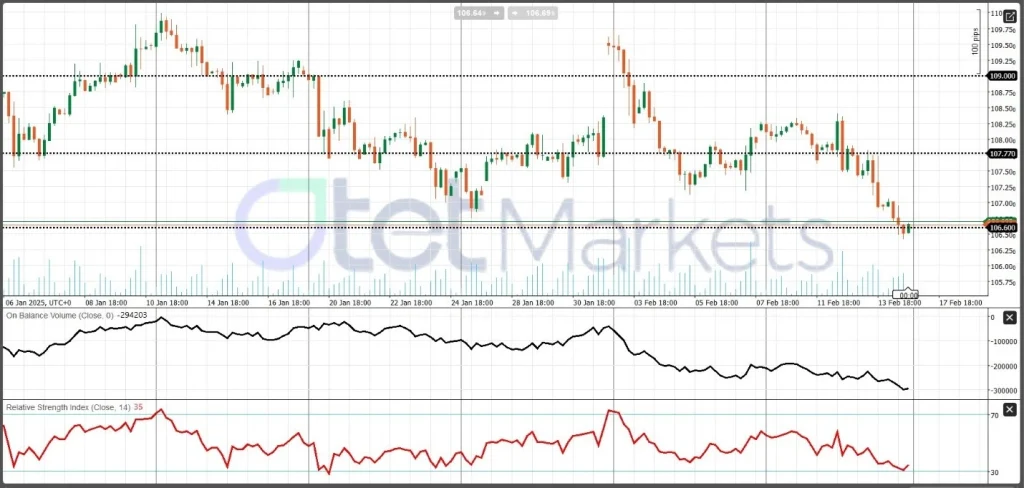
In the stock market, while we initially expected the S&P 500 to fall below 6,000 by the end of last week, the Ukraine peace talks shifted market sentiment. However, as the week progresses and media coverage of the talks diminishes, we may see renewed pressure on equities. Overall, our outlook remains bearish for Wall Street stock prices. If the S&P 500 falls below 6,000, the next downside targets are 5,930 and 5,870.
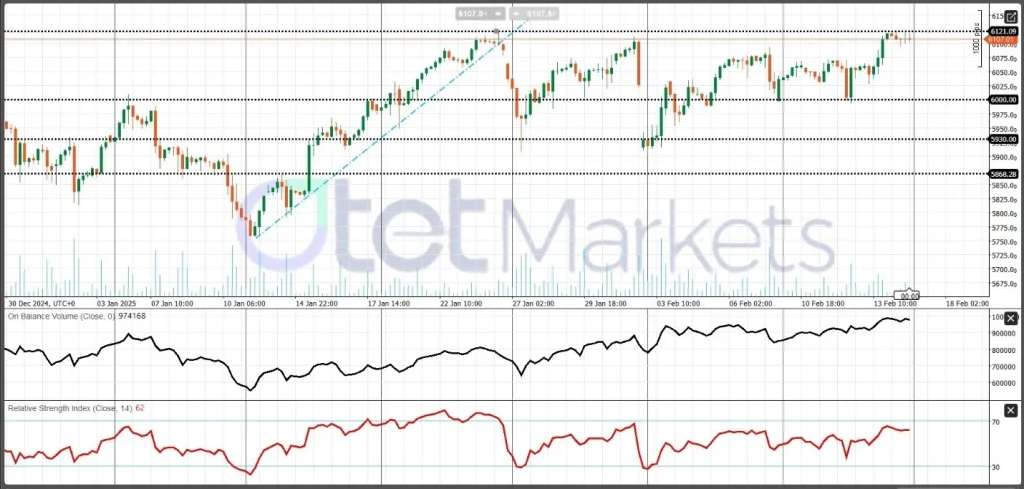
EU, Geopolitics and Economic Outlook!
The 61st Munich Security Conference, held from February 14 to 16, 2025, brought together global leaders to discuss pressing security issues, with a particular focus on the Ukraine-Russia conflict and Europe’s strategic position. According to AP news, U.S. Vice President J.D. Vance announced U.S. intentions to pursue negotiations with Russia to resolve the Ukraine conflict. Reports suggest that the proposed terms include the annexation of territories occupied by Russia, preventing Ukraine’s NATO membership, and potential elections in Ukraine that could lead to a change in government in Kyiv. This development has raised concerns among European allies about the implications for regional stability and security.
Though U.S. Vice President J.D. Vance’s remarks received mixed reactions, with German and EU officials expressing disapproval, and Russian state media praising his comments, from an economic perspective, it could be positive news for the Eurozone economy and the common currency, as peace typically supports economic growth.
The Euro (EUR) could see support from potential peace prospects in Ukraine, particularly with U.S. President Trump announcing intentions for negotiations between the U.S. and Russia. If a deal is reached, it may stabilize the region, benefiting the EUR. However, the situation remains fluid, with uncertainties around the terms of peace and the roles of Ukraine and the EU. Additionally, political instability within the EU, such as government negotiations in Austria and upcoming elections in Germany, could weigh on the EUR. Trump’s tariff proposals on Eurozone products entering the U.S. could also negatively impact the currency.
On the economic data front, the Eurozone’s Q4 GDP growth showed minimal progress, with Germany and France posting mild contractions. PMI figures will be important this week, particularly in Germany’s manufacturing sector, which remains a key area of concern. While slight improvements are expected in PMI readings, solid expansion is still a distant goal, especially for Germany.
Given the subdued economic growth outlook and persistent inflation challenges, the ECB is expected to proceed with 100 basis points of further easing this year, with rate cuts likely in March, April, June, and September, bringing the deposit rate to 1.75%. Generally, we are positive about Euro stocks and the EUR in the week ahead. However, if market sentiment changes, the Euro may come under pressure due to the overall economic data not being particularly optimistic. From a technical point of view, above 1.04, EUR/USD has a bullish pattern, with strong resistance at 1.055.
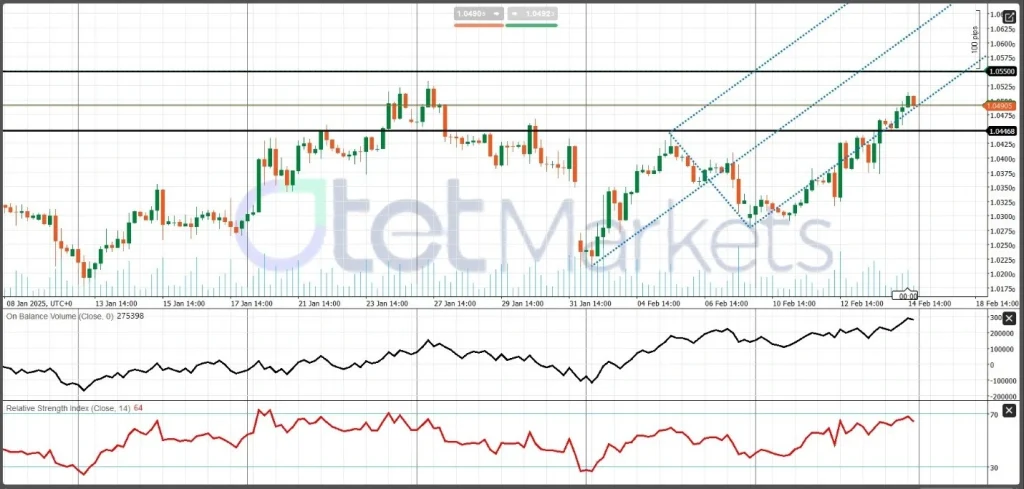
Gold, fears, and hopes!
Gold prices have experienced significant volatility recently, influenced by geopolitical tensions and economic indicators. The yellow metal has surged to a record high this week, surpassing the $2,900 per ounce mark for the first time, following heightened trade tensions.
This surge comes after President Donald Trump hinted at a potential 25% tariff on all U.S. imports of steel and aluminum over the weekend. However, the rally might not sustain its momentum for long.
Geopolitical developments, on the other hand, put the gold price under pressure after it reached an all-time high. While peace talks in Ukraine decreased market risk sentiment, Israeli hostages Iair Horn, Sagui Dekel-Chen, and Sasha (Alexander) Troufanov also arrived at a release site in Gaza on Saturday after Egyptian and Qatari mediators helped avert a standoff that threatened to sink a fragile ceasefire. The three are being returned in exchange for 369 Palestinian prisoners and detainees, a swap that eases fears that the agreement could collapse before the end of a 42-day ceasefire.
While gold has experienced significant gains due to geopolitical and economic factors, its performance in the coming week will depend on developments in trade relations, inflation data, and overall market sentiment.
Moreover, the large U.S. fiscal deficit, along with President Trump’s recent comments on the national debt, may be affecting reserve managers’ confidence. Another factor is the robust demand for gold from China, driven not only by its central bank but also by private Chinese investors in search of viable investment options.
From a technical point of view, gold remains bullish but is losing steam, with a flat OBV and RSI falling towards 40. There is strong support at 2,860, and holding this level will maintain the market’s bullish tendency. 2,840 and 2,825 are the next supports if gold breaches lower. On the flip side, reversing above 2,900 will put the 3,000 USD mark on the radar.
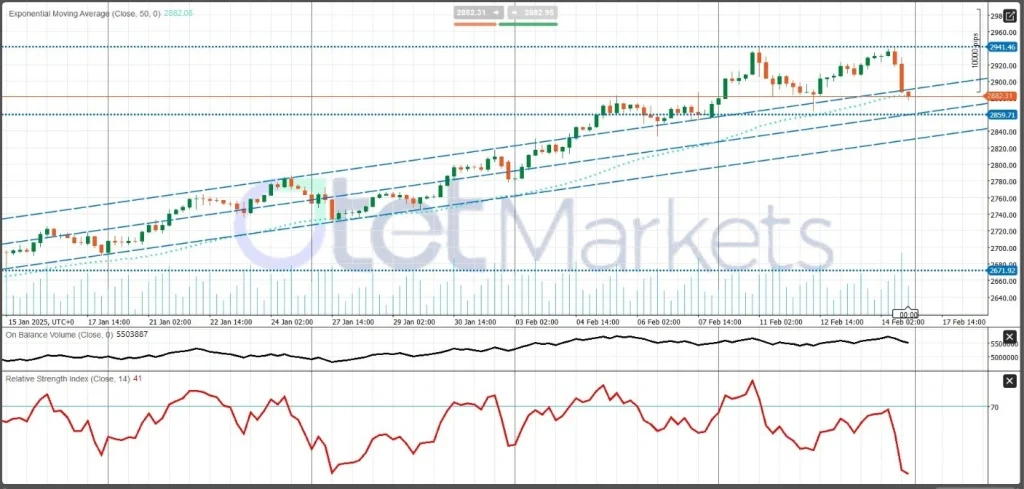
Oil and Market Doubts!
Crude oil prices have experienced notable fluctuations recently, influenced by geopolitical developments and economic indicators. West Texas Intermediate (WTI) closed last week at $70.51, posting an almost 13% loss over the past 30 days, while U.S. drillers added oil and gas rigs for the third consecutive week, reaching a total of 588 rigs, up from 586 last week.
The increase in rigs led to a slight uptick in domestic production, with commercial crude inventories rising by 4.1 million barrels last week, bringing total stockpiles (excluding the Strategic Petroleum Reserve) to 427.9 million barrels. Despite this build-up, inventories remain 4% below the five-year seasonal average, reflecting an ongoing rebalancing process in the market.
Last week, we also received monthly reports from the EIA, AIE, and OPEC, which mostly focused on increased demand over the next two years. The U.S. Energy Information Administration (EIA) has revised its 2025 crude oil price forecasts upward, attributing this adjustment to relatively lower global oil inventories in the first quarter of the year. The EIA projects that declining global oil inventories will increase crude oil prices by $2 per barrel from their December 2024 average to an average of $76 per barrel in the first quarter of 2025.
In addition, geopolitical factors continue to influence the oil market. The U.S. has intensified efforts to reduce Iranian crude exports, aiming to cut them by over 90%, which has added upward pressure on oil prices, although hopes for peace talks in Ukraine may alleviate output concerns.
Looking ahead, the oil market remains sensitive to geopolitical developments, including trade relations and potential conflicts. Additionally, economic indicators such as global demand and production levels will play crucial roles in determining price trends. While the recent upward adjustments in price forecasts suggest a cautiously optimistic outlook, the market’s direction will depend on the interplay of these complex factors.
From a technical point of view, WTI remains bearish with significant resistance at $72.80, while a breach below $70 could open the door for further declines to $69 and then $67.
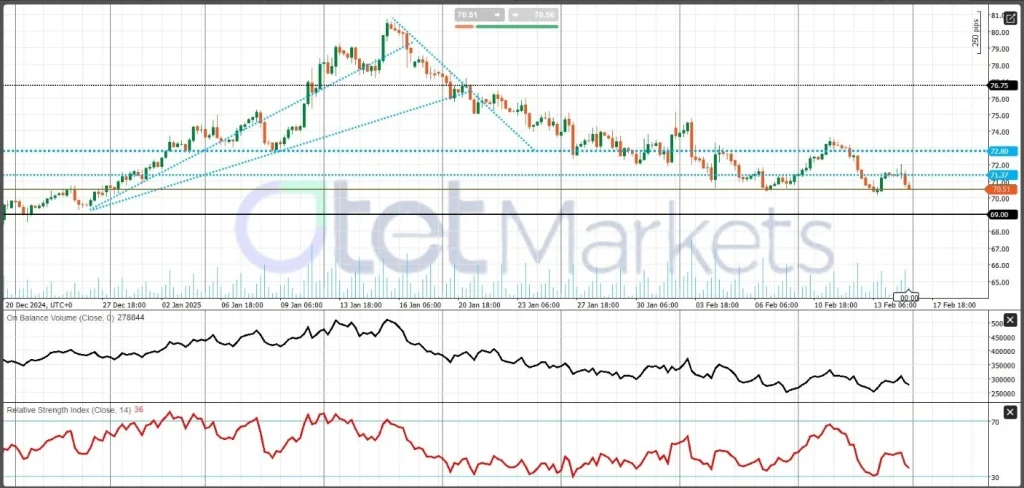
BTC- Market update and weekly outlook
Despite overall positive market sentiment, concerns over U.S. trade tariffs and persistent inflation have kept demand for crypto limited.
A dormant Bitcoin address, unused for 10.9 years, was recently reactivated, containing 300 BTC worth $29.37 million. This wallet last saw activity in 2014, four years after Satoshi Nakamoto’s disappearance and the year of Ethereum’s ICO. The reawakening of old Bitcoin wallets has become more frequent, especially during Bitcoin’s recent surge, which peaked at $109,114 on January 20, 2025. Many early Bitcoin holders lost their keys, but some have now recovered them, contributing to the rise in dormant wallets coming back to life. In one case, 14,000 BTC that hadn’t moved for 7-10 years were transferred, but none went to an exchange, suggesting no immediate sale is planned.
Proposed legislation in 18 U.S. states aims to establish state-level Bitcoin reserves, potentially leading to the purchase of around $23 billion worth of Bitcoin. States such as Massachusetts, Ohio, Texas, Illinois, North Carolina, and Florida have introduced these bills, though their outcomes remain uncertain.
The Bitcoin market is poised for potential growth, supported by institutional investments and positive regulatory changes. However, market volatility remains a concern, and investors should monitor geopolitical events and regulatory shifts that could impact market dynamics.
While the Bitcoin market exhibits positive momentum, it is important to stay informed about ongoing developments and exercise caution due to inherent volatility. From a technical perspective, BTC/USD is currently trading between $94K and $101K. Any new trend will require breaking these levels either higher or lower.
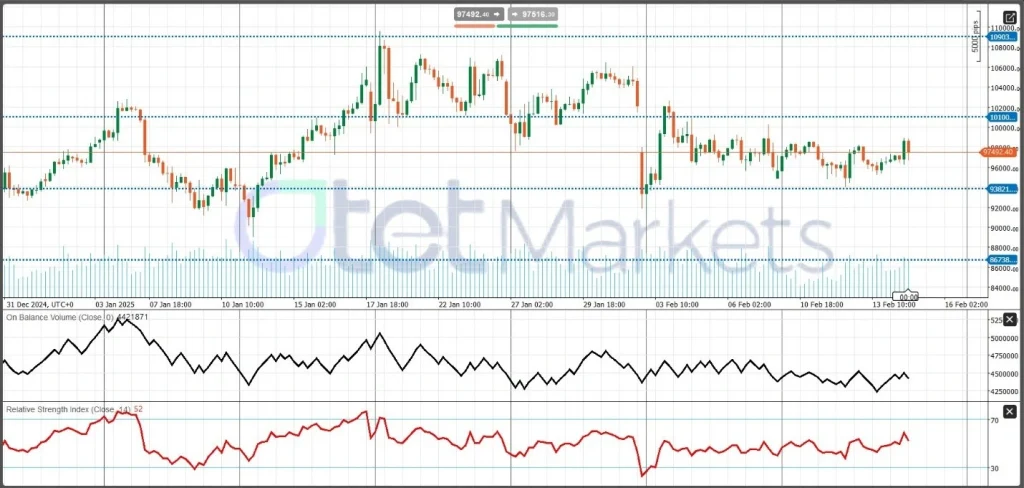
Share
Hot topics
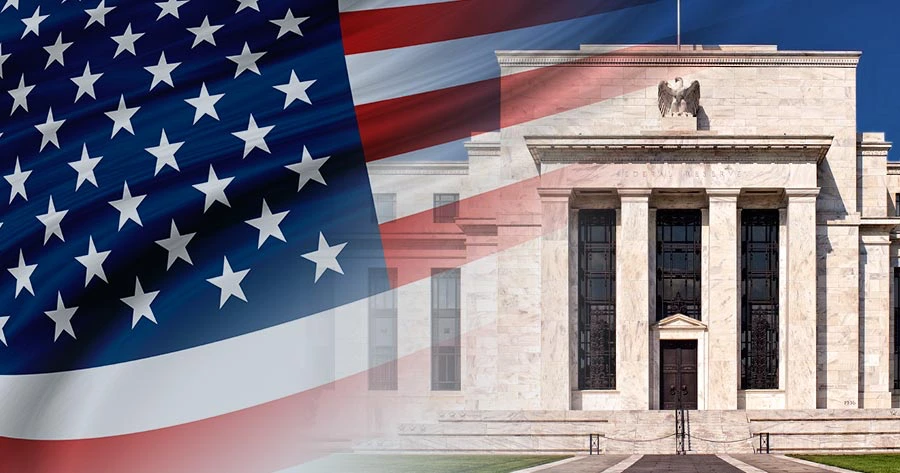
Federal Reserve’s Challenges to Trump’s New Policies
As the Federal Reserve Open Market Committee (FOMC) prepares for its upcoming meeting, all eyes are on how the Fed will respond to Donald Trump’s latest economic policies. With the...
Read more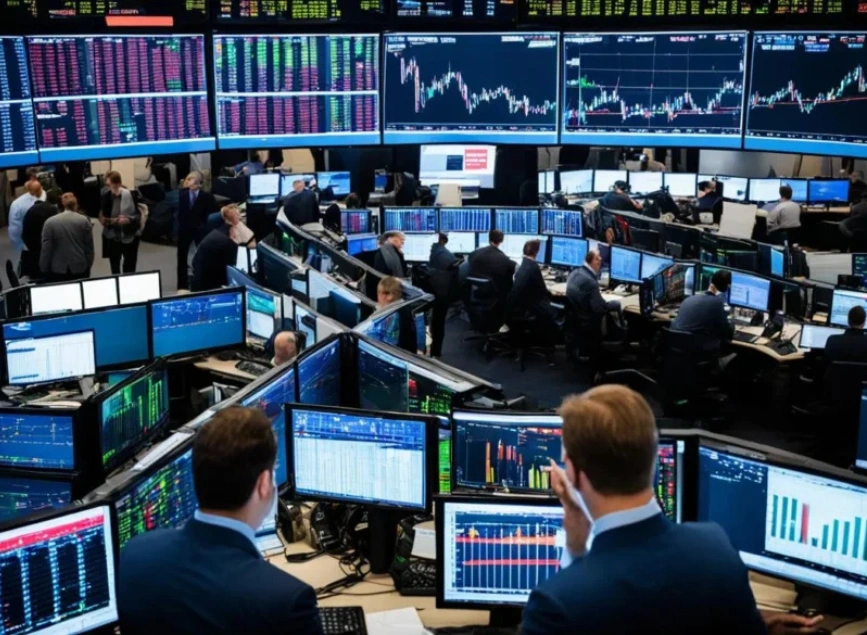


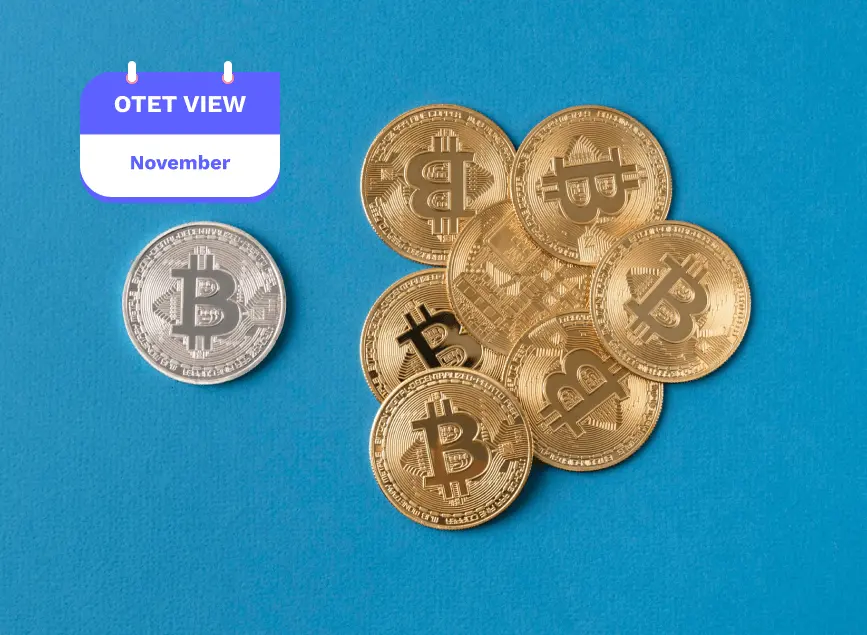

Submit comment
Your email address will not be published. Required fields are marked *